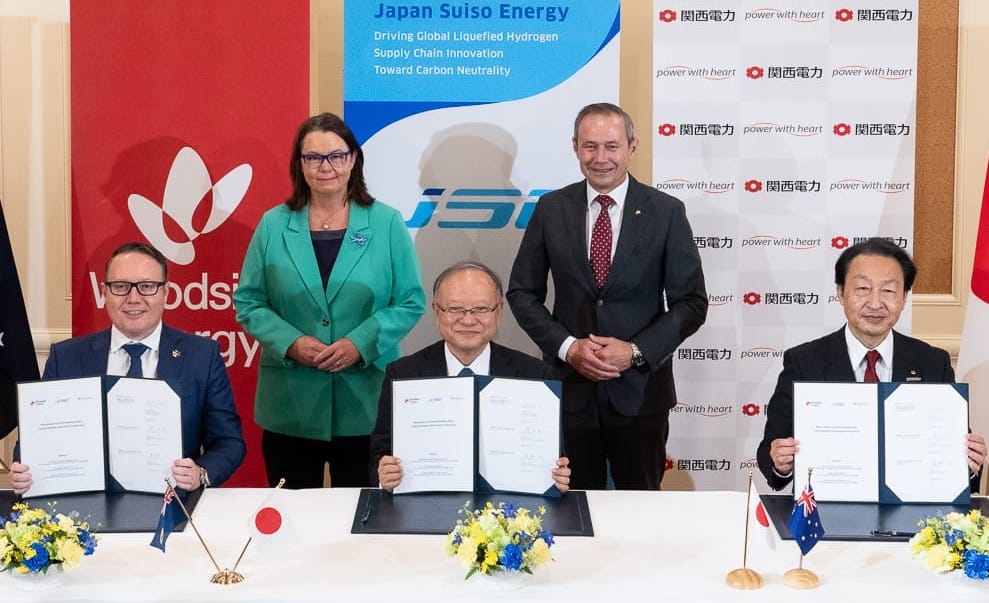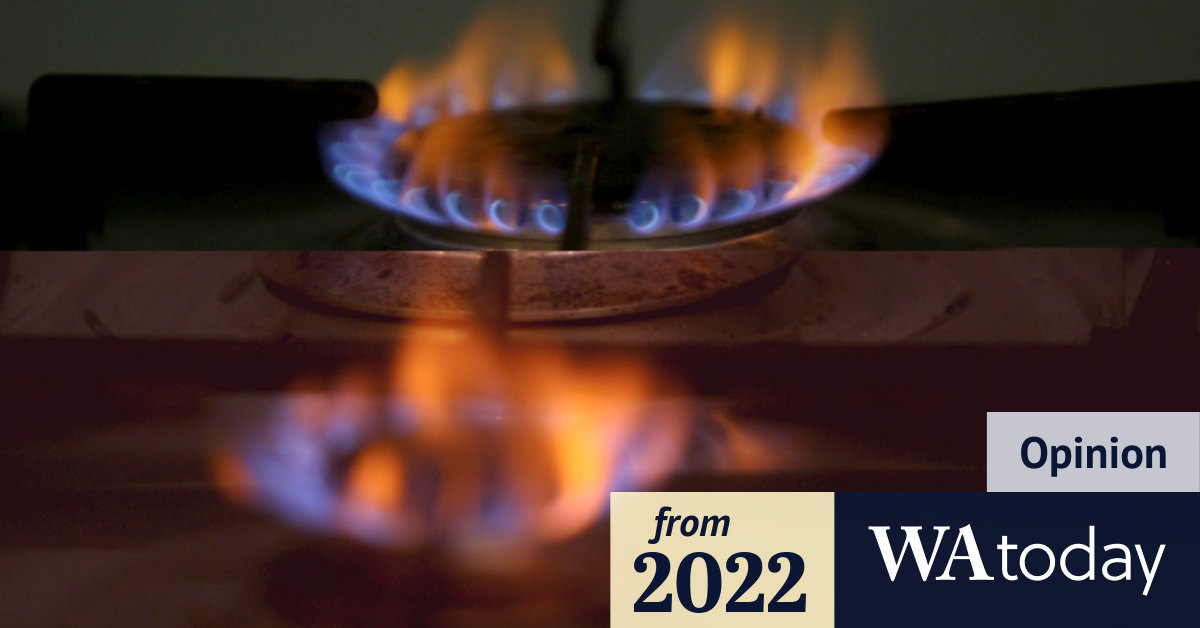Gas leftover from exports not enough for WA power and industry: AEMO
Rising gas prices resulting in job losses are inevitable unless the WA government mandates more supply from gas exporters.
After a big splash four years ago and little publicity since, Woodside has teamed up with Japanese partners to promote a smaller, later, and dirtier hydrogen plant.

ANALYSIS
Woodside has dropped cleaner green hydrogen technology from its proposed H2Perth plant, which will be much smaller and later than when it was first announced four years ago.
Australia's biggest oil and gas company has shelved plans to produce hydrogen in Tasmania and Oklahoma but is persevering with a proposal near its hometown of Perth.
On Thursday, Woodside signed a memorandum of understanding (MOU) with Japanese power utility Kansai Electric Power (KEPCO) and liquid hydrogen specialist Japan Suiso Energy (JSE) to "pioneer the development of a liquid hydrogen supply chain between Australia and Japan."
Woodside's new plan for a hydrogen plant in Rockingham and Kwinana is substantially different from what it proposed four years ago.
The company has dropped so-called green hydrogen, produced by splitting water into hydrogen and oxygen with electrolysers powered by renewable energy, from its plan.
Many other companies, including Fortescue, which vociferous green hydrogen advocate Andrew Forrest chairs, have also recently canned plans to produce the clean fuel.
Instead, the Woodside facility will only produce blue hydrogen, made from natural gas (methane), with much of the CO2 produced being captured and buried underground. Other emissions would be offset with carbon credits.
In the 2021 plan, most of the hydrogen would be combined with nitrogen to make ammonia, which is much easier to transport. A major market was expected to be burning the ammonia with coal in Japanese coal-fired power stations to lower carbon emissions.
Now the focus may be on lowering emissions from gas-fired power generation.
KEPCO executive vice president Satoshi Kuwano said the utility was conducting Japan's first trial of burning hydrogen and gas together to drive a large-scale gas turbine generator.
To liquefy hydrogen to get it to Japan, it must be cooled to -253 degrees, almost 100 degrees cooler than liquefied natural gas, itself an extraordinarily energy-intensive product.
The third signatory to the MOU, JSE, developed the world's first liquid hydrogen carrier that had fire on its maiden voyage in 2022 when it was docked at Hastings, Victoria. The diesel-powered vessel later delivered the world's first cargo of liquid hydrogen to Japan.

Two years ago, Woodside and Kansia Electric signed another MOU to investigate a potential carbon capture and storage value chain from Japan to Australia. Kansai would capture CO2 from its coal and gas-fired power stations in Japan and ship it to Australia, where Woodside would store it underground.
If both value chain studies were to come to fruition, it could result in an integrated circular value chain that burns Australian methane and collects and stores some of the resultant CO2.
First, Woodside could produce and process methane at its gas-fired facilities in the Pilbara, then have gas-fired pipeline compressors pump it 1500km south to H2Perth.
The methane would then be mixed with steam from gas-fired boilers to produce hydrogen and carbon dioxide, a process known as reforming.
Most of the CO2 produced by reforming could be captured and injected underground. In its initial plan, Woodside aimed to capture 85 per cent of the CO2 within five years of first production.
The hydrogen would then be cooled to a liquid, probably by gas-fired compressors, to be loaded onto a specialised diesel or gas-powered vessel bound for Japan.
In parallel, other methane from Woodside's facilities would be liquified in LNG plants that are among Australia's top carbon polluters and be shipped northwards in a gas-powered LNG vessel.

To be used, the two ultra-chilled liquid fuels need to be turned back into gases, itself an energy-intensive process, and then mixed and fed to the gas turbine.
Unfortunately, burning a given volume of hydrogen releases significantly less heat than the same volume of gas, so a greater volume of the blended gas needs to be burned to produce the same amount of energy as pure methane.
For this reason, a hydrogen blend of say 10 per cent would reduce carbon pollution from the power plant by much less than 10 per cent.
Much, but not all, of the CO2 from the power plant burning methane could be captured using more energy, cooled to a liquid (more energy), shipped south in a different specialised fossil-fuel burning vessel, offloaded in WA and injected underground by gas-powered compressors.
Only a detailed analysis of all these activities would show whether the blending of hydrogen increases or decreases greenhouse gas emissions, and if there is any hope of it being economically viable.
The complexity of the value chain and its numerous carbon pollution sources suggest it may fail both the financial and environmental tests.
At the signing ceremony in Japan, Woodside executive vice president for strategy Andy Drummond said the MOU "sends a clear signal to our international partners that Australia and Japan are seeking to make a meaningful contribution to global decarbonisation."
We believe we can unlock new opportunities to enable a lower-carbon future, one that continues to support LNG, while also advancing new energy sources such as hydrogen.
The proposal performs better as a signal (to the uninformed) than it is likely ever will as an investment.
If you think mainstream media coverage of this issue and the broader energy transition in WA gives you and the community the whole picture, good luck to you.
Otherwise, please chip in to keep Boiling Cold going:

All the info and a bit of comment on WA energy, industry and climate every Friday